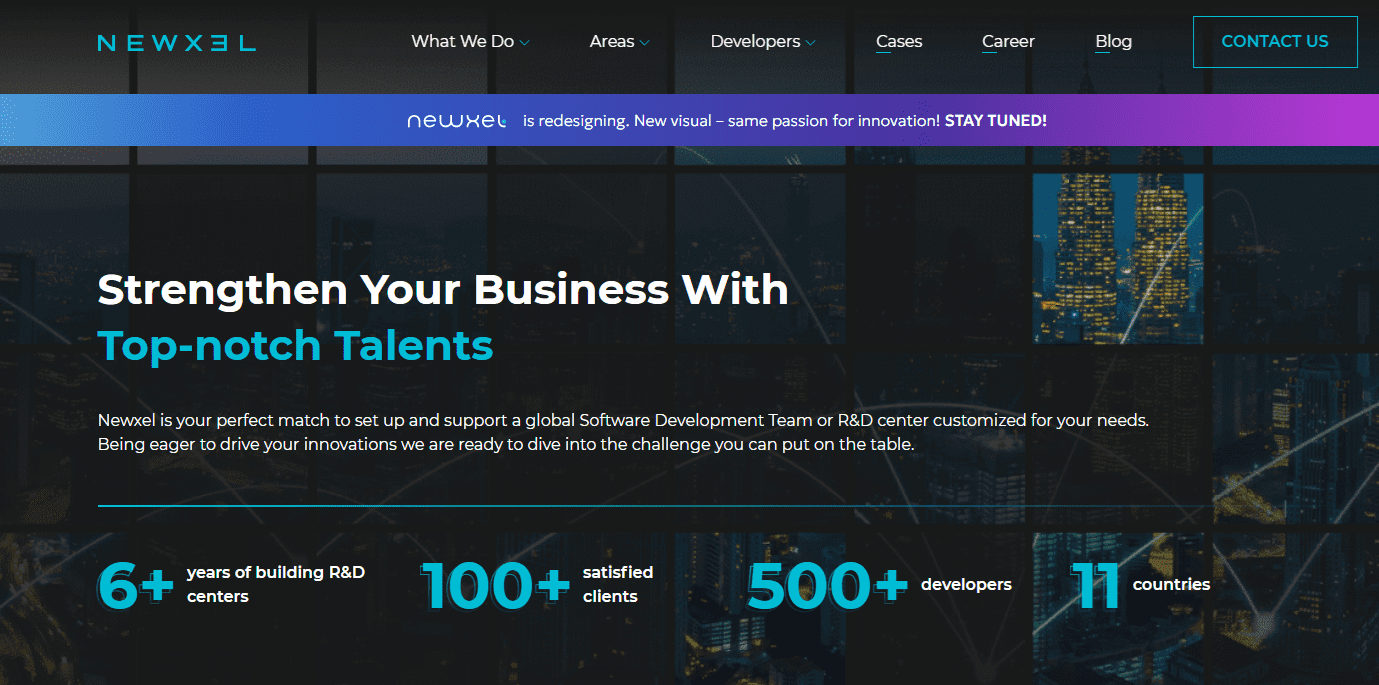Every startup begins with a small but coordinated team. There’s drive, quick decisions, flexibility — each team member can handle multiple areas at once. But as the project grows, this balance becomes fragile. With more clients and tasks, a critical question emerges: how do you scale your team without losing focus and quality?
Today, demand for engineers, analysts, designers, and marketers exceeds supply, especially in niches that require specific skills — like artificial intelligence, cybersecurity, or Web3. Companies compete for talent, and hiring becomes a long, expensive, and often exhausting race.
Market trends in recent years show that traditional hiring models can’t keep up with business growth. When a startup receives investment or suddenly gains users, the company simply can’t scale its internal team fast enough. Searching, vetting, and onboarding new employees takes weeks or months — and during this time, a competitor might already launch their product.
That’s why many young companies are turning to flexible collaboration formats — ones that let them quickly bring in additional specialists without overloading internal resources. One of the most effective tools in recent years is team augmentation for startups.
This approach isn’t new, but after 2020, with businesses shifting to remote work en masse, it became almost standard in tech. Startups began actively combining internal and external teams, achieving the optimal balance of speed, control, and cost.
What Is Startup Team Augmentation?
Team augmentation is a collaboration model in which a company temporarily or long-term strengthens its in-house team with external specialists. They work side by side with your employees, join internal meetings, follow your processes, and essentially become part of your team. At the same time, all administrative matters (from employment and HR support to finance and legal aspects) are handled by team augmentation agencies. As a result, you get a team that works as a seamless extension of your own, without the extra operational hassle.
This isn’t classic outsourcing, where you “hand off” a project to a contractor, and it’s not freelancing, where responsibility is often unclear. It’s strategic reinforcement: businesses get access to the skills they need exactly when they need them, very quickly.
For startups, this sounds almost perfect. Young companies typically have limited budgets, tight deadlines, and a need for flexibility. They can’t afford to spend months searching for specialists or waste resources administering HR processes. Startup team augmentation makes it possible to add the necessary roles to your team in literally 1-3 weeks: from experienced developers to product designers or QA engineers.
The model’s popularity surged after the pandemic, when remote work became the norm and borders between “internal” and “external” teams practically disappeared. Companies realized they could collaborate with the best specialists worldwide, not limited to their local market.
To better understand how team augmentation differs from other formats, let’s compare them briefly:
| Format | Model Essence | Process Control | Launch Speed | Suitable for Startups |
| In-house team | Full-time employees in the company | Full control | Slow | Partially (at launch) |
| Freelance | Individual specialists for short tasks | Minimal control | High | Limited |
| Outsourcing | Full project transfer to external company | Low control | Medium | Not always |
| Team Augmentation | External specialists integrated into the internal team | High control | High | Optimal |
The key idea is that augmentation isn’t a team replacement — it’s a natural and fast expansion. This allows startups to stay flexible while accelerating development or product scaling.
Newxel company is one example of partners helping startups build these flexible collaboration models. They provide quick access to experienced engineers and teams while maintaining the quality, control, and shared work culture.
Benefits of Team Augmentation for Startups
Fast Scaling
Need to bring in additional engineers for a release, but internal HR is busy for months? Team augmentation lets you connect the right specialists in weeks, sometimes days. For example, it’s convenient to build a team around specific technical goals: the client selects a team lead, then the team quickly forms under their leadership, shortening the time to create a full working group.
Budget Optimization
Paying only for needed roles helps avoid permanent costs like annual salaries, benefits packages, and office space. A startup can first hire a designer to create mockups, then when the design is ready — add developers, testers, and other roles to the team.
Access to Global Talent Markets
Local markets often lack niche specialists. Through augmentation, startups gain access to engineers with the right tech stack from other countries where such specialists are more available. This is especially useful for niches like ML/AI or security: after 2020, the remote work model made such connections simpler and more effective.
Risk Reduction
When business priorities shift, it’s easier to adjust external team composition than to lay off many full-time employees. Companies using staff augmentation can quickly change focus and roles. IT agency case studies show how startups released updates many times faster without permanently increasing headcount.
Product Focus
Instead of spending internal resources on routine tasks or short-term features, the core team focuses on strategy and product development, while external specialists handle technical needs. Ultimately, the startup achieves rapid progress in functionality while keeping strategic expertise “inside.” This is confirmed by practical staff augmentation guides and real provider case studies.
How to Scale Your Team Through Augmentation: Step by Step
Start by reaching out to a company specializing in staff augmentation or dedicated teams. They’ll help quickly select candidates, organize the legal side, and accelerate onboarding. Here are the steps using a fictional startup, BrightPay, which offers a fintech product for small businesses.
Step 1 — Needs Analysis
The Product team and CTO review the backlog: what’s critical for next quarter (for example, payment gateway integration and load testing). They identify roles: senior backend (Node.js), DevOps, QA automation. A clear vacancy list reduces selection errors.
Step 2 — Partner Selection
BrightPay looks for a provider with fintech experience, reads case studies, and checks reviews. Important questions: Do they have implemented cases of similar scale? What’s the communication like (English)? What about timezone and team lead availability? Partners like Newxel or other staff augmentation providers should provide candidate profiles and show relevant cases.
Step 3 — Onboarding & Integration
After selection, BrightPay conducts a 1-week intensive: access, architecture, codebase walkthrough, sets expectations for processes (code review, definition of done). New engineers participate in daily standups and sprint planning: this is important, so they become a part of the process, not an external “black box.”
Step 4 — Communication & Control
They implement transparent reporting: weekly demos, velocity metrics, KPIs for external specialists (for example, story points completed, test coverage quality). Regular 1:1s with the team lead help quickly identify problems and adjust work.
Step 5 — Sustainability
A 6-12 month plan: determine which roles should become internal after stabilization and which remain external. BrightPay establishes a long-term model with the partner, where collaboration can scale to new tasks without rigid staffing commitments. This provides flexibility and maintains control over costs and quality.
Common Mistakes When Scaling a Startup
Even the most promising startups often stumble not from lack of ideas, but from poor scaling. Below are the main mistakes to avoid if you’re planning to expand your team through team augmentation for startups.
1. Hiring Without Strategy — “Filled the Position, Not the Problem”
Common scenario: the founder sees the team is overloaded and urgently hires developers. But without clear understanding of what problem they should solve, new people only increase chaos. Result — budget overruns and misaligned priorities. Successful companies, on the other hand, start with a plan: which functions need coverage now, what can be delegated externally, and where internal expertise is necessary.
2. Ignoring Cultural Fit
Even the most talented engineers won’t deliver results if they’re not integrated into the startup’s internal culture. When remote specialists don’t understand the team’s values or communication style, it creates a “trust barrier.” Solution: spend time on shared standups, informal meetings, explain the mission and product style to newcomers — this reduces misunderstanding risks.
3. Lack of Onboarding
Onboarding isn’t just giving access to Jira or Slack. It’s a process that determines how quickly someone becomes productive. GitLab, which works fully remotely, has a detailed 200-page onboarding guide that helps new specialists integrate in an average of 3 days. Startups often neglect this — and newcomers spend weeks figuring out “what’s happening.”
Tip: Create a minimal onboarding document and assign a mentor from the core team to guide external specialists in their first weeks.
4. Focusing Only on Price, Not Quality
The desire to save money is natural for startups, but “cheap” often becomes “twice as long and expensive.” Instead of focusing only on rates, evaluate technical maturity, experience in your niche, and specialists’ soft skills.
5. Growing Too Fast Without Stable Processes
When a startup sharply increases headcount but lacks mature process structure, everything falls apart: backlog grows, communication breaks down, releases delay.
The right path — scale gradually: implement SCRUM or Kanban, document key processes, build internal cross-team collaboration rules. Only then does team augmentation bring stable results.
Conclusion
Smart scaling isn’t about headcount — it’s about quality synergy between product, team, and business goals. For startups, it’s important not just to “build muscle,” but to do it while maintaining flexibility and focus on what matters most — creating value for users.
Startup team augmentation isn’t a temporary patch — it’s a strategic tool for sustainable growth. It provides access to global talent, optimizes costs, and speeds up market entry. The key is choosing a partner who understands startup specifics and can help create a real product team, not just “provide people.”
So if your project is preparing to scale, think not only about new features but also about how exactly you’re expanding your team. Team augmentation for startups is a proven path to grow strategically while staying flexible, efficient, and ready for any market challenges.



































